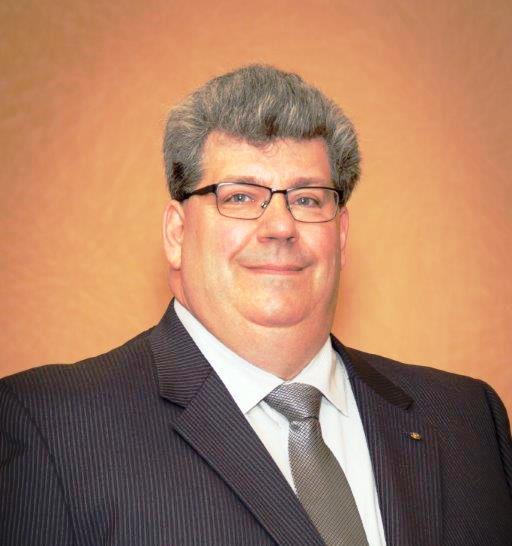In this article, J. Brett Carruthers offers additional tips on minimizing conditions that might cause pipes to freeze. Click here for Part 1.
As winter begins its annual visit, this is the time to minimize the opportunities for conditions leading to freezing pipes and their subsequent rupture, damage and disruption.
Additional helpful tips
Cold weather is an equal-opportunity freezer. Both metal and plastic pipes will break when water freezes and expands.
- Keep thermostats above 60 degrees in areas that are poorly insulated. Every degree counts!
- Drain all pipes not in use or not used for fire protection.
- Check for pipe insulation in basements, crawl spaces, under stages, and other areas where pipes may be under-heated.
- Check for wet pipe insulation in the same locations. Wet insulation is an indication of an active leak and requires correction before a freezing condition occurs.
- Identify all water main valves and maintain clear access to them in case they must be closed quickly. Ensure closure devices are in place.
- Open doors from heated areas to unheated areas to keep pipes sufficiently warm.
- Take and monitor thermometer readings, especially on cold days, to help determine vulnerable areas.
- Check fresh air intakes (especially in boiler rooms) to ensure the louvers are not frozen open.
- Check to see if pipe sleeves and heat tapes are working.
Double-check vulnerable areas such as:
- Pipes running against exterior walls
- Outdoor hose bibs, pool or outdoor shower supply lines and sprinkler lines that run through unheated or uninsulated spaces
- Supply lines in garages or receiving areas
- Water lines in locker or team rooms
If you’ve had a pipe freeze in the past − or experienced a near miss − anticipate a repeat unless you’ve taken adequate preventive measures.
Be proactive over winter holidays and long weekends
The winter months have a host of extended breaks and long weekends. These are particularly worrisome because fewer staff are available to detect heat malfunctions, frozen or burst pipes, low thermostat settings or renovations and repairs that expose pipes.
Arrange for staff to check buildings during these breaks. Early detection can prevent significant damage and coinciding disruption to school operations.
Building management systems
Meet with your building management system (BMS) contact. Ensure temperature setbacks are not below 55 degrees. Ensure univents are programmed to increase heat if temperatures in the room fall below 55 degrees. Check boiler operating temperature set points to ensure they are compliant with the manufacturer’s specifications. Check other temperature parameters and sensors to ensure they are properly set for the change in seasons.
If your BMS provider has the capability to send critical alerts via text or email, ensure these are set to notify you of below 55-degree temperatures in rooms (in unoccupied state). This is also a great time to update your contact points with your automated BMS alerts (above) and EMS, police, and security companies to reflect personnel and contact number changes that may have occurred in the last year.
Loss of power
The loss of power is a leading cause of pipe freeze and pipe break losses. Buildings are without heat for an extended period leading to their freezing, rupturing and subsequent damage. Buildings without emergency power should have arrangements made for portable generators to provide emergency power to mission-critical equipment [heat plant, freezers, coolers, IT equipment, and building alarm systems]. Alternatively, provisions should be made for portable heating units to provide building heat while the building is without power.
Emergency generator checks
Emergency generators should be run weekly for at least 30 minutes and periodically under load to ensure they will start and can handle the load. They should receive preventive maintenance by a qualified firm semi-annually to ensure their reliability during emergencies. Staff should receive training in their operation.
For fueled generators, the fuel should be fresh, and the tank(s) topped off prior to cold weather setting in. There have been numerous instances of generators failing due to contaminated fuel. Stored fuel can accumulate algae, which can quickly plug fuel strainers and filters.
Capital Planning
In buildings without emergency power generation, this must become a priority need for upcoming capital projects. Protecting mission-critical equipment is essential.
Other Steps
If leaks occur, remove and discard water-damaged ceiling tiles, clean up the water as soon as possible, and utilize drying equipment (fans and dehumidifiers). Call a restoration company or flooring expert immediately If water gets on or underneath. It needs rapid attention to avoid a significant loss. When necessary, contact a restoration company for emergency mitigation services.
*The views and opinions expressed in the Public Risk Management Association (PRIMA) blogs are those of each respective author. The views and opinions do not necessarily reflect the official policy or position of PRIMA.*

By: J. Brett Carruthers, ASP, CSP, RSSP
Senior Vice President - Risk Management and NYSIR Director of Risk Management, Wright Public Entity
Summary of Qualifications
Brett is the senior vice president of risk management and director of innovation for Wright Public Entity, as well as director of risk management for the New York Schools Insurance Reciprocal. Brett counsels school administrators in methodologies to mitigate risk in school operations. He is an innovative thought leader and solutionist in public school risk management.
Brett has over 40 years of diverse safety and risk management experience. He is a graduate of Indiana University of Pennsylvania with a BS degree in safety sciences and a minor in human resource management. He is a professional member of the American Society of Safety Professionals serving in numerous elected leadership roles and a recipient of the prestigious Culberson Award for contributions to the Society. Brett is a fellow of the Los Angeles Council of Engineering and Scientists and an Edward J. Waring Lifetime Achievement Award recipient for his contributions to the safety profession by the Western New York Safety Council.
Responsibilities
Brett is responsible for all risk management program aspects for the NY Schools Insurance Reciprocal. He oversees the risk control team and the risk transfer team in their duties providing service to NYSIR's 345 members.
Business Experience
Brett is a safety and risk management professional with over 40 years of experience in both the public and private sectors. He has extensive experience in high risk construction, chemical process safety, municipal public sector safety/risk management and K-12 Public school safety/risk management.
Professional Affiliations
- American Society of Safety Professionals
- Board of Certified Safety Professionals
- Public Risk Management Association
Education
- B.S. Safety Science, Indiana University of PA
- Minor: Human Resource Management



